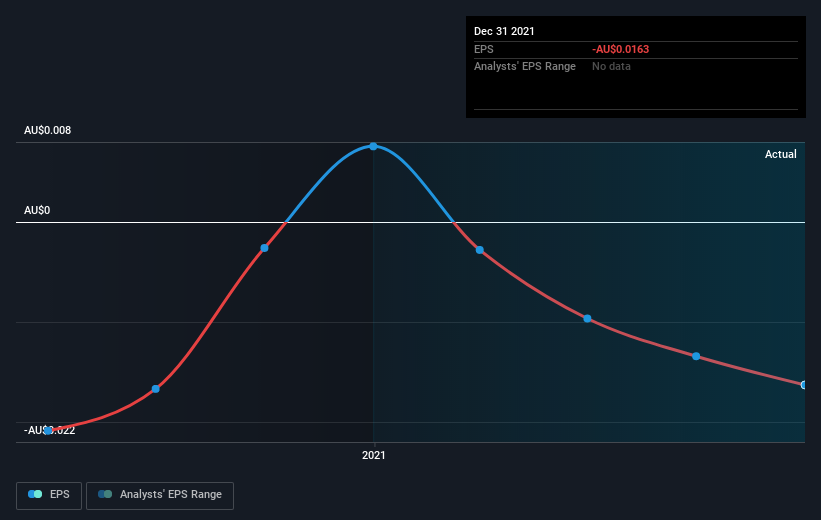
With the business potentially at an important milestone, we thought we'd take a closer look at Armour Energy Limited's (ASX:AJQ) future prospects. Armour Energy Limited, together with its subsidiaries, focuses on the discovery, development, and production of natural oil and gas, and associated liquid resources in Australia. The company’s loss has recently broadened since it announced a AU$12m loss in the full financial year, compared to the latest trailing-twelve-month loss of AU$26m, moving it further away from breakeven. Many investors are wondering about the rate at which Armour Energy will turn a profit, with the big question being “when will the company breakeven?” Below we will provide a high-level summary of the industry analysts’ expectations for the company.
See our latest analysis for Armour Energy
According to some industry analysts covering Armour Energy, breakeven is near. They anticipate the company to incur a final loss in 2021, before generating positive profits of AU$2.5m in 2022. Therefore, the company is expected to breakeven roughly a year from now or less! At what rate will the company have to grow in order to realise the consensus estimates forecasting breakeven in under 12 months? Using a line of best fit, we calculated an average annual growth rate of 105%, which signals high confidence from analysts. If this rate turns out to be too aggressive, the company may become profitable much later than analysts predict.

Given this is a high-level overview, we won’t go into details of Armour Energy's upcoming projects, though, keep in mind that generally an energy business has lumpy cash flows which are contingent on the natural resource and stage at which the company is operating. This means that a high growth rate is not unusual, especially if the company is currently in an investment period.
Before we wrap up, there’s one issue worth mentioning. Armour Energy currently has a relatively high level of debt. Generally, the rule of thumb is debt shouldn’t exceed 40% of your equity, which in Armour Energy's case is 65%. A higher level of debt requires more stringent capital management which increases the risk in investing in the loss-making company.
Next Steps:
There are too many aspects of Armour Energy to cover in one brief article, but the key fundamentals for the company can all be found in one place – Armour Energy's company page on Simply Wall St. We've also compiled a list of essential factors you should further examine:
- Historical Track Record: What has Armour Energy's performance been like over the past? Go into more detail in the past track record analysis and take a look at the free visual representations of our analysis for more clarity.
- Management Team: An experienced management team on the helm increases our confidence in the business – take a look at who sits on Armour Energy's board and the CEO’s background.
- Other High-Performing Stocks: Are there other stocks that provide better prospects with proven track records? Explore our free list of these great stocks here.
New: Manage All Your Stock Portfolios in One Place
We've created the ultimate portfolio companion for stock investors, and it's free.
• Connect an unlimited number of Portfolios and see your total in one currency
• Be alerted to new Warning Signs or Risks via email or mobile
• Track the Fair Value of your stocks
Have feedback on this article? Concerned about the content? Get in touch with us directly. Alternatively, email editorial-team (at) simplywallst.com.
This article by Simply Wall St is general in nature. We provide commentary based on historical data and analyst forecasts only using an unbiased methodology and our articles are not intended to be financial advice. It does not constitute a recommendation to buy or sell any stock, and does not take account of your objectives, or your financial situation. We aim to bring you long-term focused analysis driven by fundamental data. Note that our analysis may not factor in the latest price-sensitive company announcements or qualitative material. Simply Wall St has no position in any stocks mentioned.
About ASX:AJQ
Armour Energy
Armour Energy Limited, together with its subsidiaries, focuses on the exploration, development, and production of oil and gas, and associated liquid resources in Australia.
Medium and slightly overvalued.
Similar Companies
Market Insights
Community Narratives



